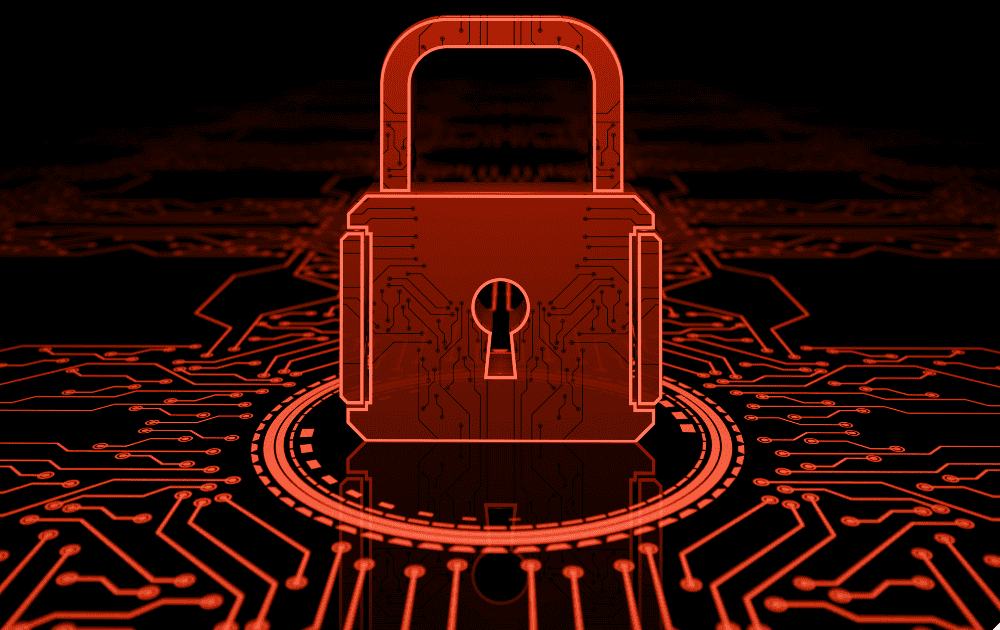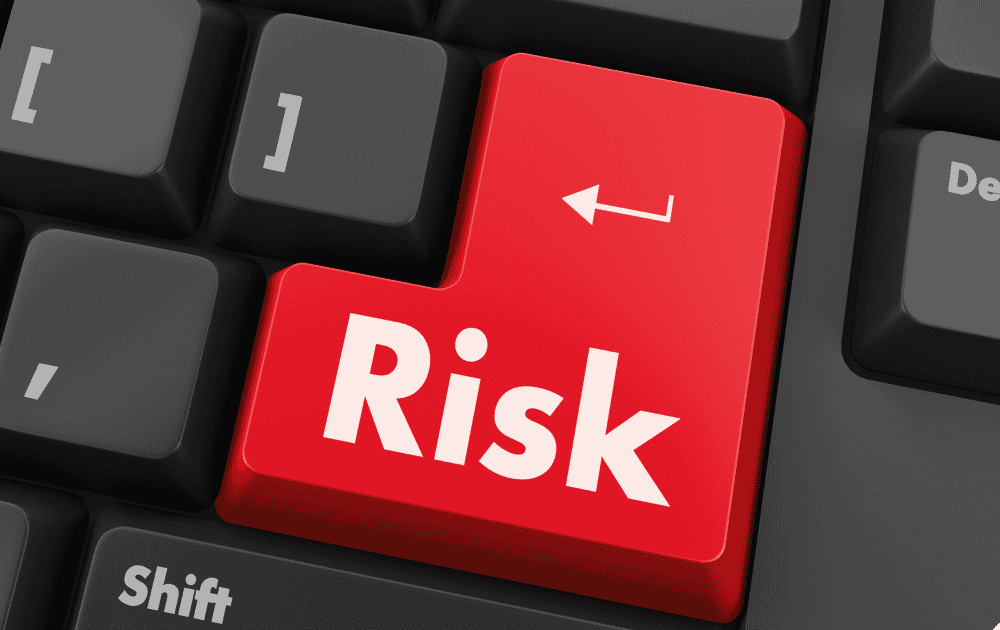Certain industries face heightened vulnerability to cyber attacks due to the sensitive nature of their data and operations. Healthcare, finance, and retail, for example, are prime targets for cybercriminals seeking valuable information. Understanding which sectors are most at risk can help organizations prioritize their cybersecurity efforts and implement stronger defenses.
Let’s take a closer look at these industries and why they are particularly susceptible to cyber threats!
The Growing Concern of Cyber Threats
The rise of cyber threats presents a significant challenge for organizations across various sectors. From data breaches to ransomware attacks, the evolving tactics of cybercriminals have demonstrated the need for proactive cybersecurity measures. As technology advances and connectivity expands, the potential impact of cyber threats continues to grow, underscoring the urgency for robust protective measures.
Importance of Cybersecurity Across Industries
Cybersecurity plays a critical role in safeguarding sensitive data and mitigating risks in today's interconnected world. Industries that handle vast amounts of confidential information, such as financial institutions, healthcare organizations, and government agencies, are particularly vulnerable to cyber attacks. Without adequate cybersecurity measures in place, these sectors face the threat of financial losses, reputational damage, and legal repercussions.
To further illustrate the significance of cybersecurity in different industries, consider the following statistics:
| Industry Sector | Number of Reported Cyber Incidents (2021) |
| Financial Sector | 1,200 |
| Healthcare Industry | 800 |
| Government Agencies | 600 |
These numbers highlight the pervasive nature of cyber threats across sectors and emphasize the need for proactive cybersecurity strategies to mitigate potential risks. By prioritizing cybersecurity awareness, investing in advanced security solutions, and fostering collaborative efforts for cyber resilience, organizations can proactively defend against cyber threats and safeguard their digital assets.

Industries at High Risk
Certain industries are particularly vulnerable to cyber threats. The financial sector, healthcare industry, and government agencies are among those facing heightened risks and challenges in cybersecurity.
Financial Sector
The financial sector is a prime target for cybercriminals due to the sensitive and valuable information it holds. From banking institutions to investment firms, organizations in the financial sector are constantly under threat from various cyber attacks aimed at financial data theft, fraud, and disruption of services.
| Type of Threat | Frequency |
| Phishing Attacks | High |
| Ransomware Incidents | Increasing |
| Insider Threats | Significant |
Healthcare Industry
The healthcare industry is another attractive target for cyber threats due to the vast amount of personal and medical data it processes. Hospitals, clinics, and healthcare providers are often targeted for ransomware attacks, data breaches, and unauthorized access to patient records, posing a significant risk to patient privacy and safety.
| Type of Threat | Frequency |
| Data Breaches | Common |
| Ransomware Attacks | Rising |
| IoT Vulnerabilities | Emerging |
Government Agencies
Government agencies at various levels are prime targets for cyber attacks aiming to disrupt critical infrastructure, steal sensitive information, or manipulate systems for political gain. The interconnected nature of government operations and the reliance on digital systems make them susceptible to a wide range of cyber threats.
| Type of Threat | Frequency |
| Nation-State Attacks | Persistent |
| Data Leaks | Concerning |
| Social Engineering | Targeted |
With the increasing sophistication of cyber threats across these industries, it is imperative for organizations to implement robust cybersecurity measures to safeguard their systems, data, and operations. By understanding the specific risks faced by the financial sector, healthcare industry, and government agencies, proactive steps can be taken to mitigate vulnerabilities and enhance cyber resilience.
Vulnerabilities and Targets
Understanding the common cyber threats faced by industries and the techniques employed by cybercriminals is imperative in cybersecurity. This section sheds light on the vulnerabilities and targets that organizations across various sectors encounter in the digital landscape.
Common Cyber Threats Faced by Industries
Industries are confronted with a myriad of cyber threats that can have detrimental effects on their operations and data security. Below are some of the prevalent cyber threats that pose risks to the integrity and confidentiality of critical information in organizations:
| Cyber Threat | Description |
| Phishing Attacks | Deceptive emails or messages aiming to obtain sensitive information. |
| Ransomware | Malicious software that encrypts data and demands a ransom for decryption. |
| DDoS Attacks | Overloading servers or networks, disrupting services and causing downtime. |
| Malware Infections | Software designed to damage or gain unauthorized access to systems. |
| Insider Threats | Malicious or negligent actions by internal employees leading to data breaches. |
Being aware of these threats enables organizations to fortify their cyber defenses and implement proactive measures to mitigate risks effectively.

Techniques Used by Cybercriminals
Cybercriminals employ a range of sophisticated techniques to infiltrate systems, steal data, and disrupt operations. Understanding these malicious tactics is paramount for organizations to enhance their cybersecurity posture. Some common techniques utilized by cybercriminals include:
| Cybercriminal Technique | Description |
| Social Engineering | Manipulating individuals to divulge sensitive information or grant access. |
| Exploiting Software Vulnerabilities | Leveraging weaknesses in software to gain unauthorized access or deploy malware. |
| SQL Injection | Injecting malicious code into a database query to extract data. |
| Man-in-the-Middle Attacks | Interception of communication between two parties to steal information. |
| Zero-Day Exploits | Exploiting previously unknown vulnerabilities before they are patched by developers. |
Staying informed about these techniques enables organizations to proactively defend against cyber threats and minimize the likelihood of falling victim to cyber attacks.
Understanding the landscape of vulnerabilities and the tactics utilized by cybercriminals lays the foundation for strengthening cybersecurity practices and safeguarding sensitive data and assets from malicious actors. Organizations must remain vigilant, continuously enhance their defenses, and collaborate with cybersecurity experts to navigate the evolving cyber threat landscape effectively.
Impact of Cyber Attacks
When cyber attacks target industries, the repercussions can be severe, impacting various aspects of businesses and organizations. The aftermath of these attacks often results in financial losses, reputational damage, and legal and compliance issues.
Financial Losses
The financial impact of cyber attacks on industries is significant. These attacks can lead to direct monetary losses resulting from theft of funds, extortion demands, or disruption of financial operations. Moreover, the costs associated with restoring systems, investigating the breach, and implementing enhanced security measures can further escalate financial burdens.
| Industry | Average Financial Losses (USD) |
| Financial Sector | $18.3 million |
| Healthcare Industry | $7.1 million |
| Government Agencies | $10.3 million |
Reputational Damage
Reputational damage is a critical consequence of cyber attacks, particularly in industries that rely on trust and credibility. When customer data is compromised, trust in the organization diminishes, leading to loss of customers, negative publicity, and a damaged brand image. Rebuilding a tainted reputation can be a lengthy and challenging process for affected industries.
| Industry | Impact on Reputation |
| Financial Sector | Loss of Customer Trust |
| Healthcare Industry | Negative Public Perception |
| Government Agencies | Erosion of Public Confidence |
Legal and Compliance Issues
Cyber attacks can also result in legal and compliance issues for industries, especially those handling sensitive data. Data breaches may violate data protection laws, leading to regulatory fines and penalties. Additionally, affected entities may face lawsuits from individuals impacted by the breach, further exacerbating legal challenges and compliance obligations.
| Industry | Legal and Compliance Ramifications |
| Financial Sector | Regulatory Fines |
| Healthcare Industry | Lawsuits from Patients |
| Government Agencies | Breach of Data Protection Laws |
Understanding the impact of cyber attacks on financial stability, reputation, and legal standing is crucial for industries to fortify their cybersecurity defenses and mitigate risks effectively. By investing in robust security measures, raising employee awareness, and conducting regular vulnerability assessments, organizations can bolster their resilience against cyber threats and safeguard their operations from potential harm.

Mitigating Cyber Risks
Mitigating cyber risks is paramount for safeguarding sensitive information and maintaining the integrity of IT systems. Implementing robust cybersecurity measures, conducting employee training and awareness initiatives, and performing regular vulnerability assessments are essential components in fortifying defenses against cyber threats.
Importance of Robust Cybersecurity Measures
Securing IT infrastructures against cyber threats requires a multi-layered approach encompassing various security measures. Deploying firewalls, encryption protocols, and intrusion detection systems can help prevent unauthorized access and data breaches. Additionally, implementing access controls, applying regular security patches, and conducting security audits are critical in maintaining a resilient cybersecurity posture.
Employee Training and Awareness Initiatives
One of the weakest links in cybersecurity is human error. Employees often unknowingly fall prey to social engineering tactics, phishing scams, or malware attacks, compromising the overall security of an organization. Providing comprehensive cybersecurity training programs and awareness initiatives can empower employees to recognize and respond effectively to potential threats. Educating staff on best practices for email security, password management, and safe browsing habits can significantly reduce the risk of cyber incidents.
Regular Vulnerability Assessments
Conducting regular vulnerability assessments is essential for identifying weaknesses in IT systems and applications that could be exploited by cybercriminals. By performing penetration testing, security audits, and vulnerability scans, organizations can proactively detect and remediate vulnerabilities before they are leveraged in cyber attacks. Establishing a systematic vulnerability management process ensures that security gaps are promptly addressed, reducing the likelihood of successful cyber intrusions.
The collective implementation of robust cybersecurity measures, employee training programs, and routine vulnerability assessments contributes to a proactive cybersecurity strategy that enhances resilience against evolving cyber threats. By prioritizing these initiatives, IT companies and professionals can better protect sensitive data, uphold operational continuity, and mitigate the impact of cyber attacks on their organizations.
Future Trends and Preparedness
As the landscape of cyber threats continues to evolve, it is essential for industries to stay ahead of emerging risks and enhance their cybersecurity measures. In this section, we will focus on three key aspects of future trends and preparedness: emerging cyber threats, investing in advanced security solutions, and collaborative efforts for cyber resilience.
Emerging Cyber Threats
Cyber attackers are constantly developing new strategies and technologies to infiltrate systems and networks. Some of the emerging cyber threats that industries need to be vigilant about include:
| Cyber Threat | Description |
| Ransomware | Malicious software that encrypts data and demands a ransom for decryption. |
| Insider Threats | Unauthorized actions or data breaches by individuals within an organization. |
| IoT Vulnerabilities | Security weaknesses in Internet of Things devices that can be exploited for cyber attacks. |
| AI-Powered Attacks | The use of artificial intelligence to automate and enhance cyber attacks. |
Understanding these emerging threats is crucial for organizations to proactively strengthen their defenses and protect sensitive data from potential breaches.
Investing in Advanced Security Solutions
To combat the evolving cyber threats, industries must invest in advanced security solutions that offer robust protection against malicious activities. Some key security solutions that organizations can consider implementing include:
| Security Solution | Description |
| Endpoint Detection and Response (EDR) | Real-time monitoring and response to threats at endpoints. |
| Security Information and Event Management (SIEM) | Centralized logging and analysis of security events for threat detection. |
| Multi-Factor Authentication (MFA) | Adding an extra layer of security through multiple authentication factors. |
| Security Training and Awareness Programs | Educating employees on cybersecurity best practices to reduce human error risks. |
By adopting these advanced security solutions, industries can strengthen their defense mechanisms and mitigate the impact of cyber attacks.
Collaborative Efforts for Cyber Resilience
In the face of constantly evolving cyber threats, collaborative efforts among industries, government agencies, and cybersecurity experts are essential for building cyber resilience. By sharing threat intelligence, best practices, and resources, organizations can collectively enhance their cybersecurity posture and respond effectively to cyber incidents.
Collaborative initiatives such as information sharing forums, joint cybersecurity exercises, and public-private partnerships play a key role in strengthening the overall cyber resilience of industries. By working together to address common threats and vulnerabilities, organizations can better protect themselves and the broader ecosystem from cyber attacks.
Proactively addressing emerging cyber threats, investing in advanced security solutions, and fostering collaborative efforts for cyber resilience can significantly bolster cybersecurity defenses across industries. Staying informed about the latest trends in cybersecurity and adapting preventive measures accordingly is essential for safeguarding sensitive data and maintaining operational resilience in the digital age.
With LK Tech's comprehensive cybersecurity services, we equip organizations with the tools and strategies necessary to combat cyber threats effectively. If you’re looking to strengthen your defenses, contact us today to discover how our cybersecurity services in Cincinnati can help protect your business!



